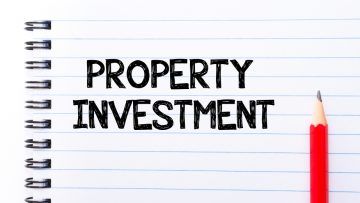Annual house price growth slowed to 2.2% in January, which is down on the 2.7% rate recorded in December, according to the latest House Price Index from Halifax.
On a quarterly basis, house prices remained unchanged between November and January when compared to the previous quarter (August to October). On this measure, prices have dropped from the average 1.3% rise recorded in December.
Month-on-month, house prices fell for the second consecutive month in January, by 0.6%, following a 0.8% drop in December.
The average UK house price in January was £223,285, which is 1.9% higher than in January last year (£219,217). However, the current average price has edged down from the record £226,408 seen in November 2017.
Russell Galley, the Managing Director of Halifax Community Bank, comments on the index: “Annual house price rises have slowed from 2.7% in December to 2.2% in January – the lowest rate since July last year. We’ve seen a monthly decline as well as the quarterly rate of growth flattening out.
“Although employment levels grew by 102,000 in the three months to November, household finances are still under pressure, as consumer prices continue to grow faster than wages. Additionally, it’s still too early to see any impact for first time buyers from the abolition of Stamp Duty on purchases of up to £300,000, which was announced in the November Budget.
“Despite the recent rise in the Bank of England base rate, mortgage rates are still very low. This, combined with an ongoing acute shortage of properties for sale, will continue to underpin house prices over the coming months.”
The Halifax data also reveals that total UK home sales in 2017 were marginally lower (0.6%) than in 2016, at 1.23m. Annual sales have averaged 1.2m homes in the five years since 2013, compared to an average of 890,000 per year in the previous five years. Transactions in the fourth quarter (Q4) of 2017 were 0.5% lower than in the previous quarter.
Mortgage approvals for house purchases ended the year with a sharp fall. The number of mortgage approvals – a leading indicator of completed house sales – dropped by 5.7% on a monthly basis in December, to 61,039 – the lowest level since January 2015. Over the 12 months to December, total mortgage approvals were 2% lower than in the same period in 2016.

Annual House Price Growth Slowed to 2.2% in January, Reports Halifax
New instructions to sell also continue to deteriorate at the headline level and have now fallen for 23 consecutive months – the worst sequence for almost eight years. Although average housing supply per estate agent remained broadly stable, it is still close to historic lows. On the demand side, new buyer enquiries fell marginally, having been broadly stable in the previous month.
And the number of first time buyers is estimated to have reached 359,000 in 2017, according to the Halifax First Time Buyer Review. The amount of first time buyers had gone up by 6% in the past 12 months, continuing an upward trend of six years. First time buyers now account for half of all house purchasers with a mortgage – up by 36% on a decade ago. This increase has come despite the average home deposit almost doubling, from £17,740 in 2007 to £33,339 last year.
Comments
Lucy Pendleton, the Founder Director of independent estate agent James Pendleton, reacts to the figures: “If the housing market’s New Year resolution was to continue to defy expectations, it’s still just about managing to do that.
“News of a second monthly decline coming on the back of the kind of stock market turbulence we haven’t seen since the Brexit vote means it’s harder but not impossible to be optimistic. The market has still grown year-on-year and the declines are modest.
“The housing market is a special case and the ingredients that precipitate housing market corrections are not yet present, even if they are now rearing their head on global indices.
“Lending is cheap by historical standards and that, coupled with a lack of supply, is sustaining the market. It’s unlikely prices will rise significantly in 2018, but expect to see a continued slow rate of growth.”
The Founder and CEO of online estate agent Emoov.co.uk, Russell Quirk, also comments: “With wage growth failing to keep pace with consumer prices, the immediate aftermath of the festive season is a tough time of year for all, as demonstrated by this rather fitting market freeze. January is always a struggle and, even with the current low cost of mortgage rates, market activity will remain predictably muted as buyers look to find their stride financially.
“Price growth will soon thaw and, as the market gains momentum into spring and summer, the pick-up in buyer interest and market activity will see prices once again on the up.
“While it may be too soon to see any direct impact from the abolition of first time buyer Stamp Duty, a number of industry sources are reporting a strong uplift in buyer demand among this demographic.
“But, as we are all too aware, there is a severe lack of building stock to quench the thirst of the nation’s aspirational buyers as it is, let alone with this additional influx of interest.
“As a result, it is possible that another Government initiative to help those priced out of the market could inadvertently see prices increase as demand is fuelled and further outweighs supply. There is also a chance that shrewd sellers in the £280,000 region will increase their asking prices to sit just below the Stamp Duty threshold in order to maximise their property potential in an otherwise slower market. If this were to happen, prices would see an additional boost as a result, but to the detriment of struggling buyers.”
Ishaan Malhi, the CEO and Founder of online mortgage broker Trussle, offers his thoughts: “Buyers tend to flood the market after the New Year, so the fact that we’ve seen another fall in house price growth is a clear sign that the market is not picking up pace any time soon. Inflation remains high and household incomes are stretched, so price growth may not pick up pace anytime soon since. Many homeowners and renters will likely be staying put until they’re on a better financial footing.
“Slowing price growth is often viewed negatively, but it’s clearly good news for first time buyers, who are also benefitting from recent Stamp Duty changes and the continued availability of low mortgage rates. For those who are in a position to buy, it’s crucial they do their research when comparing mortgages. It’s important not to choose a deal based purely on red herring headline rates, without considering the extra fees and charges.”
And Graham Davidson, the Managing Director of buy-to-let specialist Sequre Property Investment, adds: “Just when the stock market once again has proven its volatility, property continues to prove a far better investment option, with a 2.2% annual increase in property values. The slight monthly decrease of 0.6% won’t deter investors from the number one asset class, which has outperformed other investment vehicles time and time again. When you add this steady annual increase in property values to the returns made from the annual rent collected, investors benefit from a high performance asset which continually performs year after year.
“Supply is still low with demand at an all-time-high, a factor which will spur investor desire to increase portfolios in key cities which are likely to see growth. Manchester alone is predicted to see prices soar by over 18% by 2020, a strong indication of where is best to invest.
“Tenant demand also continues to flourish, due to the need for flexibility and the inability for many first time buyers to enter the market as wages struggle to keep up with strengthening prices. With these factors in mind, the future is bright for the longevity of buy-to-let if investors continue to act smart.”






